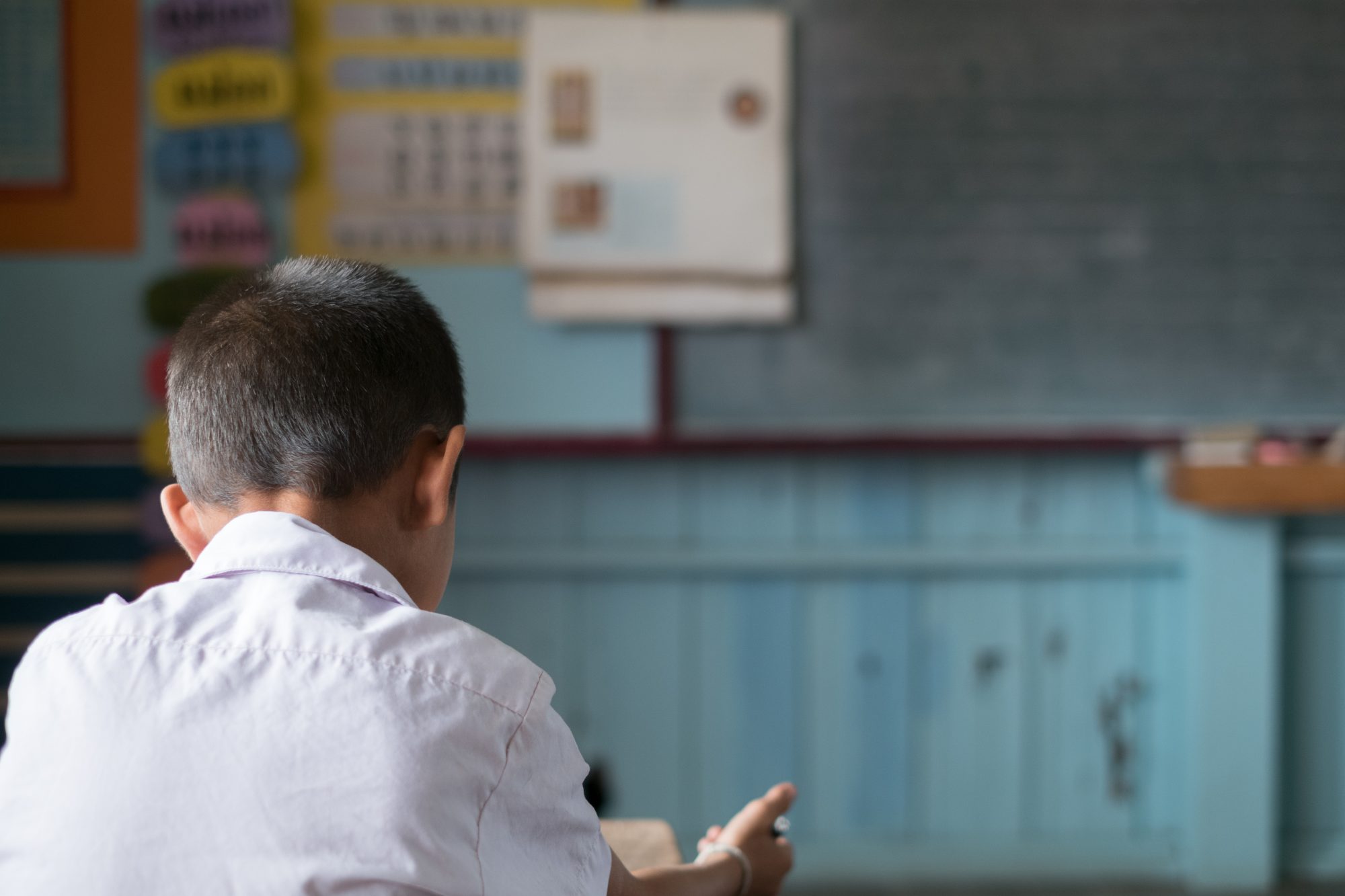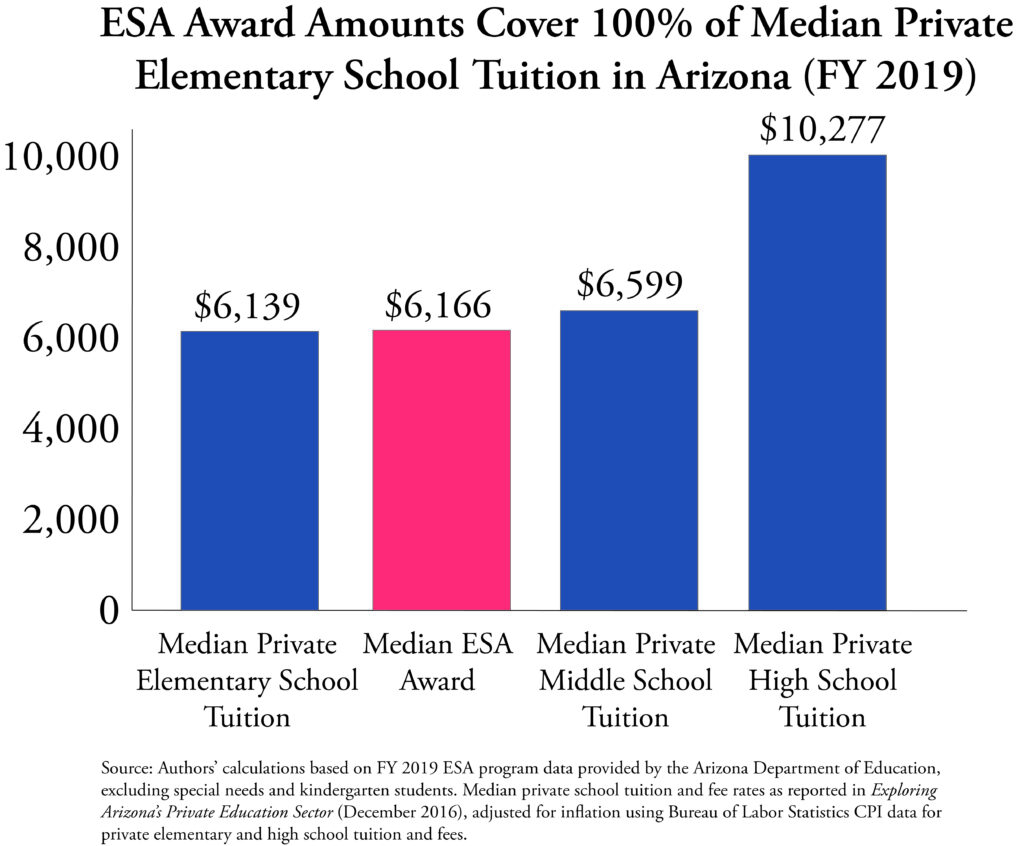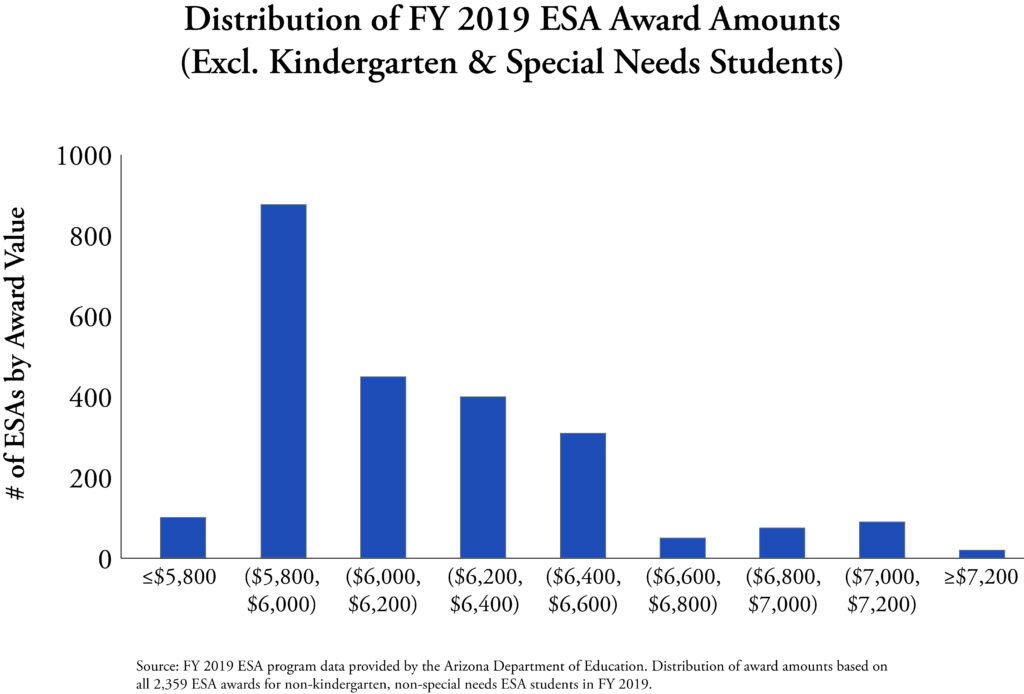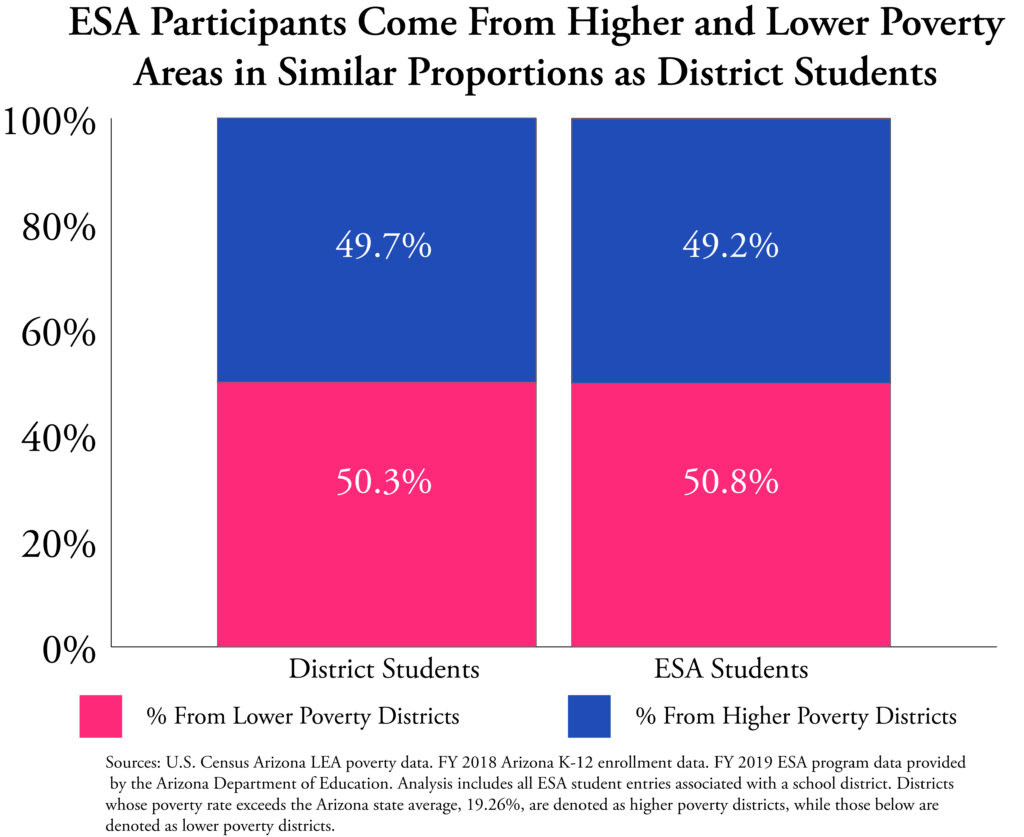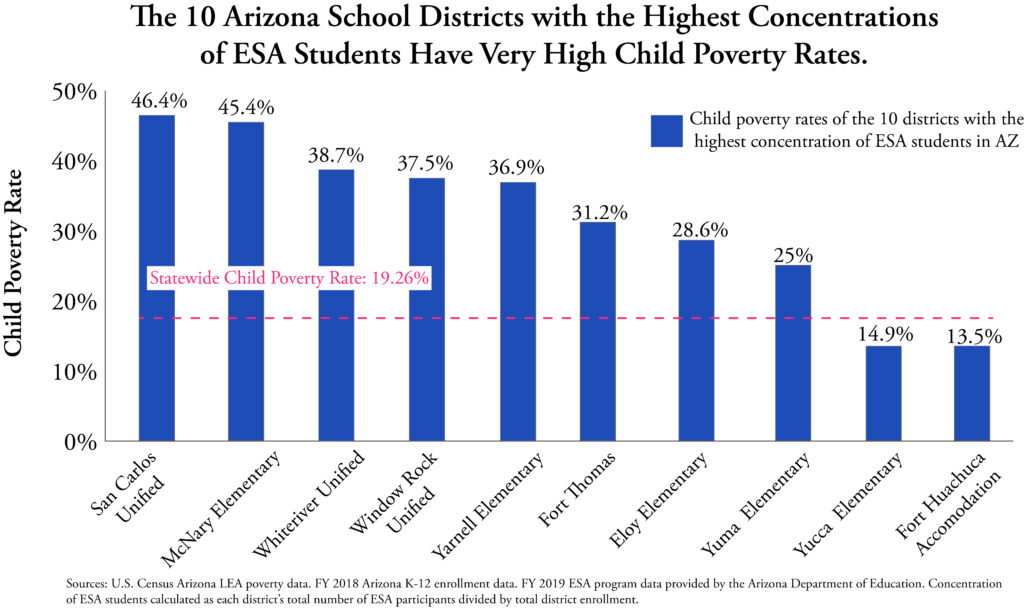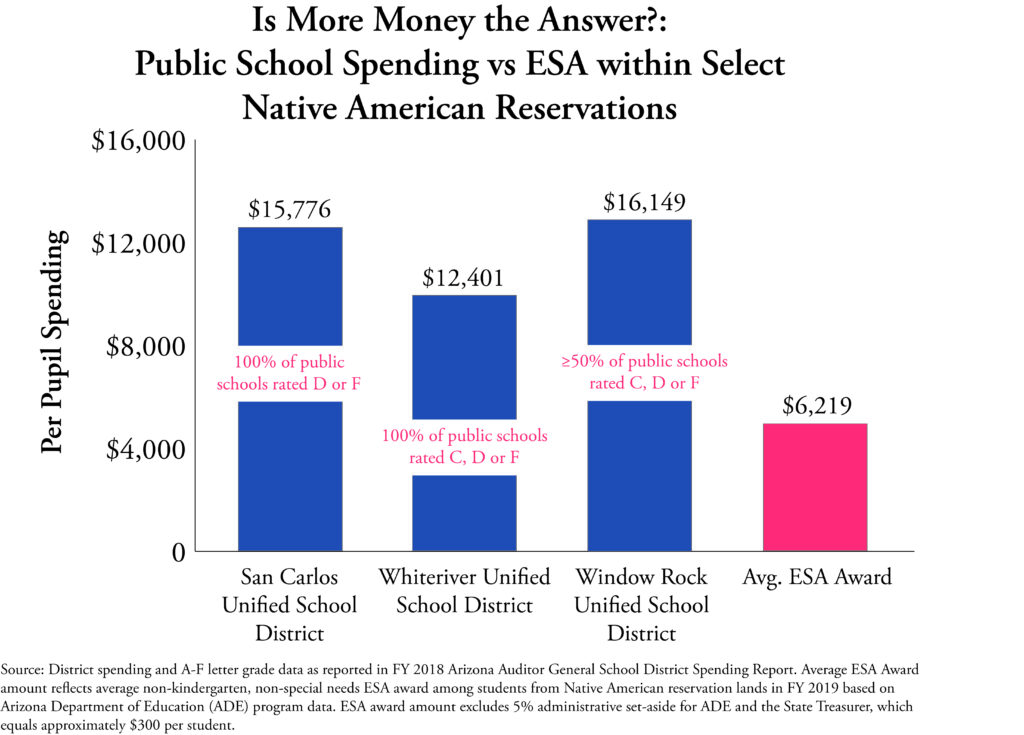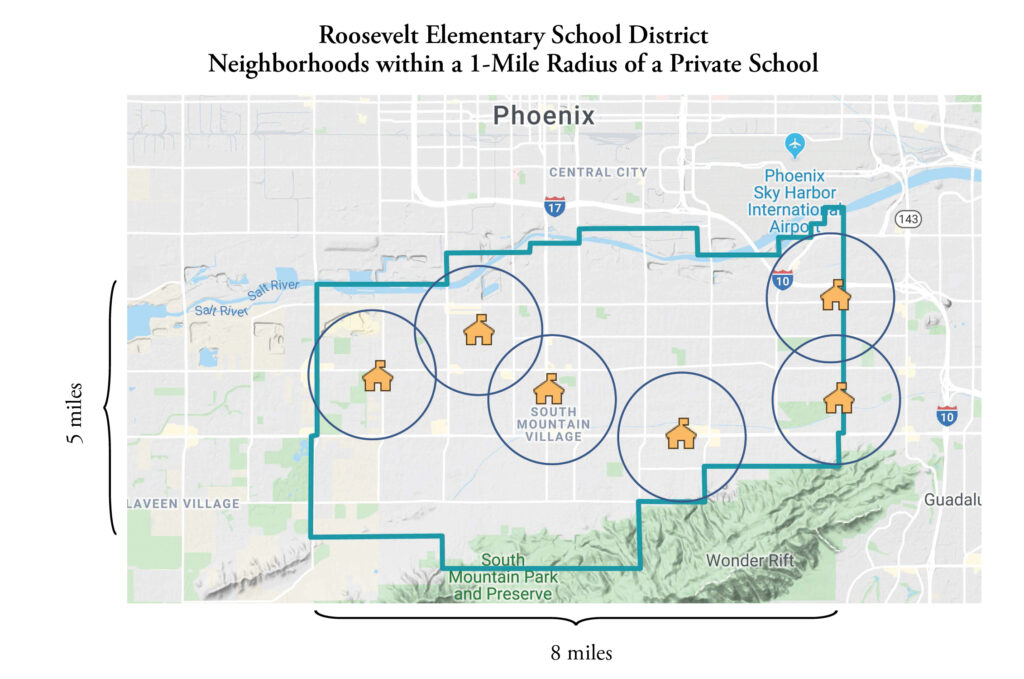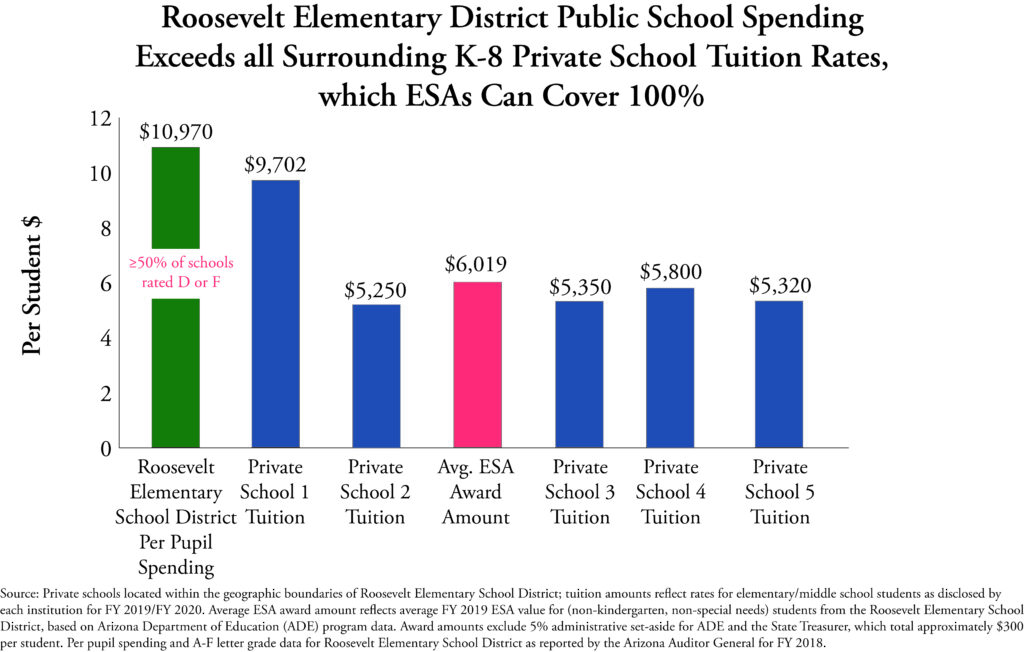End Notes
1 Matthew Chingos, Tomas Monarrez, and Daniel Kuehn, The Effects of the Florida Tax Credit Scholarship Program on College Enrollment and Graduation, Urban Institute, February 2019, https://www.urban.org/research/publication/effects-florida-tax-credit-scholarship-program-college-enrollment-and-graduation.
2 Andrew D. Catt, Exploring Arizona’s Private Education Sector, EdChoice, December 2016, https://www.edchoice.org/wp-content/uploads/2016/12/Exploring-Arizonas-Private-Education-Sector-by-Andrew-D-Catt.pdf.
3 Matt Beienburg, The Public School Benefits of Education Savings Accounts: The Impacts of ESAs in Arizona, Goldwater Institute, August 2019, https://www.goldwaterinstitute.org/wp-content/uploads/2019/08/Public-School-Benefits-of-ESAs_web.pdf.
4 Catt, Exploring Arizona.
5 Authors’ calculations using Bureau of Labor Statistics inflation data. “CPI-All Urban Consumers (Current Series): Elementary and high school tuition and fees in U.S. city average, all urban consumers, not seasonally adjusted.” CPI change from December 2016 – December 2018. Accessed October 14, 2019, https://data.bls.gov/timeseries/CUUR0000SEEB02?output_view=data.
6 Catt, Exploring Arizona.
7 Authors’ calculations based on FY 2019 ESA program data provided by the Arizona Department of Education, excluding special needs and kindergarten students.
8 Rob O’Dell and Yvonne Wingett Sanchez, “State Money Helping Wealthier Arizona Kids Go to Private Schools.” Arizona Republic, February 23, 2016, https://www.azcentral.com/story/news/arizona/politics/education/2016/02/23/state-money-helping-wealthier-arizona-kids-go-private-schools/80303730/; Rob O’Dell and Yvonne
Wingett Sanchez, “Arizona Taxpayer-Funded Vouchers Benefitting Students in More-Affluent Areas,” Arizona Republic, March 30, 2017, https://www.azcentral.com/story/news/politics/arizona-education/2017/03/30/arizona-taxpayer-funded-vouchers-benefiting-students-more-affluent-areas/99707518/; Rob O’Dell, “Prop 305: Vouchers Still Mostly Go to Students Leaving Wealthier, Higher-Performing Districts,” Arizona Republic, October 25, 2018, https://www.azcentral.com/story/news/local/arizona-education/2018/10/25/voucher-students-leave-high-performing-schools-private-schools/1734678002/.
9 O’Dell, “Prop 305: Vouchers.”
10 Authors’ calculations of FY 2019 ESA program are based on data provided by the Arizona Department of Education, ADE FY 2017-2018 Arizona K-12 Enrollment Data, and FY 2017-2018 A-F Letter Grades. The State Board of Education calculates only school level A-F scores. District ratings were imputed using weighted averages.
11 Authors’ calculations of FY 2019 ESA program are based on data provided by the Arizona Department of Education, April 23, 2019, ADE FY 2017-2018 Arizona K-12 Enrollment Data, and FY 2017-2018 A-F Letter Grades. The State Board of Education calculates only school level A-F scores. District ratings were imputed using weighted averages. Average ESA award amounts exclude kindergarten students, who are weighted as 0.5 students in both the regular public school and ESA funding formulas.
12 2017 Census Poverty Data by Local Educational Agency: Arizona. Arizona Department of Education. Accessed June 20, 2019, http://www.azed.gov/titlei/census/.
13 2017 Census Poverty Data by Local Educational Agency: Arizona. Arizona Department of Education. Accessed June 20, 2019. https://www.azed.gov/titlei/census/; FY 2018 Arizona K-12 Enrollment Data. Arizona Department of Education. https://www.azed.gov/accountability-research/data/; FY 2019 ESA program data provided by the Arizona Department of Education, April 23, 2019. Calculations include all ESA students identified by the Arizona Department of Education as being associated with a school district, rather than a charter school.
14 Arizona Department of Education, “2017 Census Poverty Data by Local Educational Agency: Arizona,” updated December 26, 2018, http://www.azed.gov/titlei/census/; Arizona Department of Education, “FY 2018 Arizona K-12 Enrollment Data,” https://www.azed.gov/accountability-research/data/; FY 2019 ESA program data provided by the Arizona Department of Education, April 23, 2019.
15 Beienburg, The Public School Benefits.
16 Arizona Auditor General, Arizona School District Spending, Fiscal Year 2018, March 2019, https://www.azauditor.gov/reports-publications/school-districts/multiple-school-district/report/arizona-school-district-3.
17 ADE FY 2017-2018 Arizona K-12 Enrollment Data, and FY 2017-2018 A-F Letter Grades.
18 Authors’ calculations of FY 2019 ESA program based on data provided by the Arizona Department of Education.
19 See, for example, St. Michael Indian School in Window Rock, Arizona. Tuition rates for grades K-12: $4,150-$4,825 per year: https://www.stmichaelindianschool.org/tuition_and_financial_aid.php.
20 Arizona Auditor General, Arizona School District Spending Report, Fiscal Year 2018, March 2019, https://www.azauditor.gov/reports-publications/school-districts/multiple-school-district/report/arizona-school-district-3.
21 FY 2019 ESA program data provided by the Arizona Department of Education.
22 Arizona Department of Education, “2017 Census Poverty Data by Local Educational Agency: Arizona,” updated December 26, 2018, http://www.azed.gov/titlei/census/.
23 Arizona Auditor General, Arizona School District Spending Report, Fiscal Year 2018, March 2019, https://www.azauditor.gov/reports-publications/school-districts/multiple-school-district/report/arizona-school-district-3.



